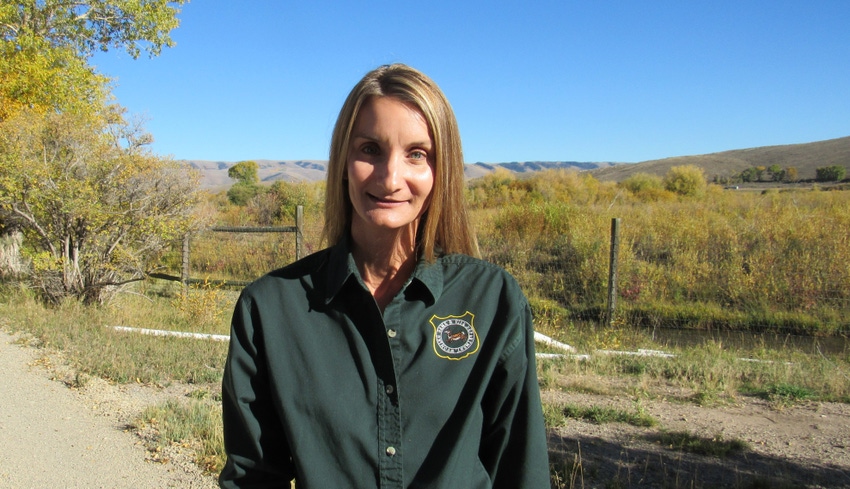
When Angi Bruce attends national conferences on working landscapes and wildlife habitat, she often finds that Wyoming is held up as an example of “how to do it right,” she says.
“For one thing, people in Wyoming love fish and wildlife,” says Bruce, deputy director of the state’s Department of Game and Fish. “People wear Wyoming t-shirts. Part of that is they don’t want it to change. Secondly, we have a culture of collaboration on things like Bighorn sheep, sage grouse and mule deer. We have a tradition of working things out.”
Bruce made her remarks during a presentation to reporters at the Cokeville Meadows National Wildlife Refuge in western Wyoming in early October. The journalists were on a tour of the Bear River watershed in Wyoming, Idaho and Utah hosted by Intermountain West Joint Venture, a Montana-based conservation group.
Wyoming’s efforts stepped into the national spotlight on Monday, Oct. 17, when Gov. Mark Gordon joined U.S. Agriculture Secretary Tom Vilsack in Washington, D.C., to announce an agreement to conserve working lands that provide habitat for migratory big game like elk, pronghorn antelope, and mule deer.
In 2023, the Natural Resources Conservation Service will provide $10 million through the Agricultural Conservation Easement Program and another $6 million from the Environmental Quality Incentives Program toward an effort to promote locally led, voluntary land and wildlife conservation, the leaders said.
At Cokeville, Bruce spoke to Wyoming’s complex relationships with water, greater sage grouse and other game species, and pressures that come with human recreation. Wyoming is leading a task force that explores states’ role in conserving imperiled species across public and private lands.
Migration corridors
As an example of a collaborative effort, Bruce cited Gordon’s 2020 executive order that established a process for identifying big-game migration corridors where development would be limited. The working group that recommended the order included representatives from agriculture, oil and gas, mining, conservation, recreation and sportsmen’s groups, according to Gordon’s office.
Developments such as residential subdivisions, solar farms and even highways can impede migration of big game between seasonal habitats, Bruce said. Landowners can help keep the migration moving with things like wildlife-friendly fencing, in which the top wire is lowered and the lowest one is raised or smoothed so that wildlife can go over or under it, she said.
Another option could be virtual fencing, for which cattle wear GPS collars and receive warning beeps or a mild electric shock if they leave a designated area. A team of researchers from the USDA’s Agricultural Research Service and Oregon State University have been working with a project to see how virtual fencing might be beneficial on federal allotments.
Such an option might be expensive, but so is managing miles of fences, Bruce said. Funding is available for voluntary measures as well as livestock depredation claims, she said.
Landowners “want landscapes to remain open and working landscapes to continue working,” she said.
About the Author(s)
You May Also Like






